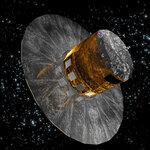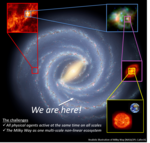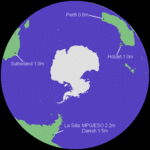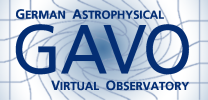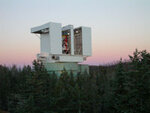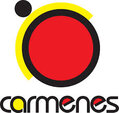Forschungskooperationen
Last update: April 2024
ZAH researchers are drivers and key participants in a large number of top international projects spanning observations, instrumentation, simulations and theory, in collaboration with the world's foremost research institutions. Such ZAH research collaborations are described below incl. links to more detailed websites presenting individual scopes and objectives.
Current Collaborations
- Vera C. Rubin Observatory (formerly LSST)
- LSST Discovery Alliance (LSST-DA)
- Legacy Extragalactic UV Survey (LEGUS)
- Dark Energy Science Collaboration (LSST-DESC)
- Galaxy UV Legacy Project (GULP)
- Small Magellanic Cloud in Time: Evolution of a Prototype interacting late-type galaxy (STEP)
- Extended Westerlund 1 and 2 Open Clusters Survey (EWOCS)
- KiDS
- J-PAS
- Euclid
- STRUCTURES excellence cluster
- The Gaia Satellite Mission
- ECOGAL
- The Large Binocular Telescope (LBT)
- LUCI cryogene spectrographs/cameras at LBT
- CARMENES
- CUBES (UV Spectrograph for the VLT)
- 4-metre Multi-Object Spectroscopic Telescope (4MOST)
- Second Earth Initiative Spectrograph (2ES)
- Probing Lensing Anomalies NETwork (PLANET)
- The German Astrophysical Virtual Observatory (GAVO)
- The High Energy Stereoscopic System (H.E.S.S.)
- DFG SPP 1992 "Exploring the Diversity of Extrasolar Planets"
- Sloan Digital Sky Survey (SDSS)
- International Research Network for Nuclear Astrophysics (IReNA)
- Bulge DECam Blanco Survey (BDBS)
- PHANGS (Physics at High Angular resolution in Nearby GalaxieS)
- The OMEGA-II Project: Characterizing the Milky Way's Hidden Populations
- PLATO
- Kepler Asteroseismic Science Consortium (KASC)
- TESS Asteroseismic Science Consortium (TASC)
- XShooting ULLYSES - Massive stars at low metallicity
- BLOeM - Binarity at LOw Metallicity
Expired Collaborations
Current Collaborations
Vera C. Rubin Observatory (formely LSST)
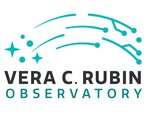
Local contact: Dr Yiannis Tsapras (ZAH/ARI) and Dr Markus Hundertmark (ZAH/ARI)
The ARI participates in the Rubin Observatory (formerly known as the Large Synoptic Survey Telescope), which will obtain deep six-color imaging of 37 billion stars and galaxies using a dedicated telescope in Chile. The Rubin Observatory carries out a a time-domain survey, gathering 20 terabytes of data every night. The survey will provide unparalleled information on variable and transient Galactic and extragalactic sources, addressing topics from cosmology to Solar system science. (2023/05/26)
LSST Discovery Alliance (LSST-DA)
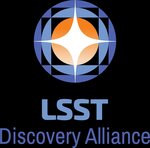
Local contact: Prof. Dr. Eva Grebel (ZAH/ARI), Prof. Dr. Joachim Wambsganß (ZAH/ARI)
The LSST Discovery Alliance (LSST-DA) aims to maximize the impact of the Vera Rubin Observatory’s Legacy Survey of Space and Time (LSST). LSST-DA is an alliance of more than 30 institutions around the globe, including the ARI, and supports programs that foster innovation, inclusion, and interdisciplinary collaboration on Rubin-LSST data. The primary LSST science interests at the ARI include exoplanets, the Milky Way and the Local Group, low-surface-brightness galaxies, and time domain astronomy.
Dark Energy Science Collaboration (LSST-DESC)
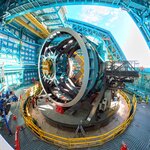
Local contact: Priv. Doz. Dr. Matteo Maturi (ZAH/ITA)
The Rubin Observatory Legacy Survey of Space and Time (LSST) explouts a 3.2 Gigapixel Rubin Observatory LSST Camera mounted on a 8.4-m Telescope located in Chile. LSST-DESC is the international science collaboration targeting fundamental cosmological parameters using data from the LSST. The depth of the data combined with the large sky area (the entire sky accessible from Chile) will allow the study of structure formation up to redshift z=1.5 with exquisite photometric redshift measures couple with studies in the time domain.
Legacy Extragalactic UV Survey (LEGUS)
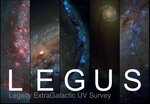
Local contact: Prof. Dr. Eva Grebel (ZAH/ARI)
LEGUS is a Hubble Space Telescope Treasury Program that imaged 50 local star-forming spiral and irregular galaxies within 12 Mpc in the optical and UV with the WFC3 and ACS cameras (PI: Prof. Daniela Calzetti, University of Massachusetts). The galaxies are resolved into stars. LEGUS quantifies how the clustering of star formation evolves in space and time and explores the impact of environment on star formation and star cluster evolution across a range of galactic and ISM properties.
Galaxy UV Legacy Project (GULP)
Local contact: Prof. Dr. Eva Grebel (ZAH/ARI)
GULP is a Hubble Space Telescope legacy survey of 27 nearby star-forming galaxies within 7.5 Mpc in the near and far ultraviolet (PI: Dr. Elena Sabbi, Gemini Observatory). Complemented by the LEGUS survey at longer wavelengths, GULP explores the properties of massive stars and the upper initial mass function at different metallicities and in different environments. GULP also investigates the role of stellar feedback in determining the evolution of starbursts and star-forming galaxies and the dust attenuation at ultraviolet wavelengths.
https://ui.adsabs.harvard.edu/abs/2020hst..prop16316S/abstract
Small Magellanic Cloud in Time: Evolution of a prototype interacting late-type galaxy (STEP)
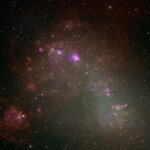
Local contact: Prof. Dr. Eva Grebel (ZAH/ARI)
STEP is a Guaranteed Time imaging survey with the VLT Survey Telescope, which provides homogeneous coverage of 53 square degrees of the Small Magellanic Cloud (SMC) and of the Magellanic Bridge in the g, r, i, and H alpha bands (PI: Dr. Vincenzo Ripepi, INAF). These data allow us to study the spatially resolved star formation history of the SMC, the properties of its rich star cluster population, and to characterize emission-line objects.
Extended Westerlund 1 and 2 Open Clusters Survey (EWOCS)

Local contact: Prof. Dr. Eva Grebel (ZAH/ARI)
EWOCS is aimed at the study of very massive young star clusters in the Milky Way, starting with Westerlund 1 and Westerlund 2. EWOCS combines Cycle 1 and Cycle 2 infrared data from the James Webb Telescope (JWST; specifically MIRI and NirCAM) with X-ray data from Chandra (PI for all programs: Mario Guarcello, INAF). In particular, we are aiming at exploring the lower initial mass function (IMF) down to the brown dwarf regime and pre-main-sequence stars in extreme starburst environments.
KiDS
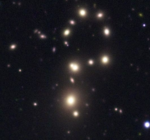
Local contact: Priv.-Doz. Dr. Matteo Maturi (ZAH/ITA, ITP)
The Kilo Degrees Survey (KiDS) is a multi-band optical photometric survey that will cover 1300 deg2 of the sky produced with OmegaCAM, the 32-ccd, 300-million pixel camera mounted on the VLT Survey Telescope (VST) at Paranal in Chile. The weak gravitational lensing analysis of the these data allows to map the distribution of matter, both luminous and dark, and constrain the properties of the universe.
J-PAS
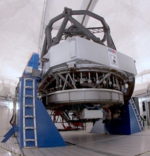
Local contact: Priv.-Doz. Dr. Matteo Maturi (ZAH/ITA, ITP)
Javalambre Physics of the Accelerating Universe Astrophysical Survey (J-PAS) is a photometric sky survey of 8500 deg2 in 59 colors, using a set of broad, intermediate and narrow band filters. This unprecedented large number of filters place J-PAS in between photometric and full integral spectroscopic surveys, delivering high accuracy photometric-redshifts and physical information of the detected objects. J-PAS will target stars, galaxies, galaxy clusters, supernovae, quasars and solar system objects with exquisite accuracy.
Euclid
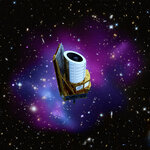
Local contact: Priv.-Doz. Dr. Matteo Maturi (ZAH/ITA, ITP)
Euclid is a space mission of the European Space Agency (ESA) which will produce deep optical and infrared images of 15.000 deg2 of the sky. The main goal of the mission is to investigate the nature of dark matter and dark energy. To do so, Euclid will measure the luminosity and shape of 10 billion galaxies up to redshift 2 and detect more then two million galaxy clusters.
https://sci.esa.int/web/euclid
STRUCTURES excellence cluster
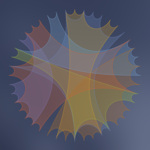
Local contact: Prof. Dr. Ralf Klessen (ZAH/ITA)
STRUCTURES explores, how complex physical structures emerge from simple rules and fundamental principles by selecting certain model systems. 8 new professorial appointments are planned. In astronomy, reionization as one of the major phase transitions in cosmic history as well as the assembly of planets out of small dust particles in accretion disks will be research topics within STRUCTURES.
STRUCTURES is organized bottom up. The cluster is led by Manfred Salmhofer, Anna Wienhard and Ralf Klessen. Also Matthias Bartelmann, Kees Dullemond, Fritz Röpke and Simon Glover participate in STRUCTURES.
The Gaia satellite mission
Local contact: Dr. Michael Biermann (ZAH/ARI)
The ZAH actively participates in the Gaia satellite mission conducted by the European Space Agency (ESA). Gaia, launched on December 19, 2013, is a mission dedicated to precisely measuring various properties of billions of stars, such as positions, parallaxes, proper motions, luminosities, colors, radial velocities, and spectra of more than 100 million stars. Its primary objective is to enhance our understanding of the structure, formation, and evolution of our galaxy, the Milky Way but also performs measurements of solar system objects, galaxies, and quasar. Within the Gaia project, ARI leads Coordination Unit 3 of DPAC, which is responsible for processing the astrometric data. DPAC, the Gaia "Data Processing and Analysis Consortium," serves as ESA's official scientific partner in the project. To date, three data releases have been made available since 2016, with the most recent release being Gaia DR3 in June 2022 ((https://zah.uni-heidelberg.de/gaia). (2023/06/06)
ECOGAL
Local contact: Prof. Dr. Ralf Klessen (ZAH/ITA)
Gravity, turbulence and magnetic fields are fundamental physical agents that govern the dynamical evolution of our Milky Way as a star and planet formation engine. They are simultaneously active on all scales, ranging from the Galaxy as a whole down to individual protoplanetary disks. At the same time, the momentum and energy input from stars, in form of radiation, winds and supernovae, creates highly non-linear feedback loops that strongly influence the behavior of the system across the entire cascade of scales. We currently witness a paradigm shift in galactic astronomy and astrophysics. Approaches that treat the constituents of the Galaxy in equilibrium and look at the various scales in isolation have reached clear limits. A comprehensive model of our Milky Way needs to consider it as one single complex ecosystem. It needs to identify the initial and boundary conditions for structure formation at all scales involved, and it needs to be based on a complete inventory of the conditions conducive to the birth of stars and planets. The primary goal of ECOGAL is to build a unifying predictive model of star and planet formation in the Milky Way.
PLANET
Local contact: Prof. Dr. Joachim Wambsganß (ZAH/ARI)
Since 1995, the Probing Lensing Anomalies NETwork (PLANET) is an international collaboration searching for extrasolar planets via microlensing effects. PLANET works closely with the OGLE, MOA, LCOGT and KMTNet teams forming in a global worldwide consortium, sharing resources, observations and models real time.
The German Astrophysical Virtual Observatory (GAVO)
Local contact: Prof. Dr. Joachim Wambsganß (ZAH/ARI) (last update 23/05/25)
The German Astrophysical Virtual Observatory (GAVO) is the German contribution to the International Virtual Observatory Association (IVOA), the international effort to create and expand the Virtual Observatory (VO). The VO is a global network of archives and services in the spirit of FAIR (findable, accessible, interoperable, and reproducable) data, held together by standards and the Registry and usable through popular clients like TOPCAT, Aladin, or pyVO. Within the VO, GAVO currently is particularly active in the fields of the queriable service registry, semi-formal semantics, and the provision of server software.
Large Binocular Telescope (LBT)
Local contact: Prof. Dr. Andreas Quirrenbach (ZAH/LSW)
The Large Binocular Telescope (LBT) is among the world's most advanced optical telescopes for astronomy. It is located on Mount Graham (Arizona, United Stated) at an altitude of 3.300 m above sea-level and combines two 8.4m-wide mirrors on a single mount. The LBT is maintained by the Large Binocular Telescope Observatory (LBTO) which itself is funded and maintained by the LBT consortium (LBTC). The LBTC has five partners, one of which is the German "LBT Beteiligungsgesellschaft" (LBTB). The LBTB holds 25% of the observing time and is composed of the Max-Planck-Institute for Astronomy, the Max-Planck-Institute for Extraterrestrial Physics, the Max-Planck-Institute for Radio Astronomy, the Leibniz-Institute for Astrophysics and the Landessternwarte Heidelberg (LSW). The LSW has a share of the observing time of several nights per year.
LUCI cryogene spectrographs/cameras at the LBT
Local contact: Dr. Walter Seifert (ZAH/LSW)
LUCI I and II are cryogene spectrographs/cameras for both telescopes of the LBT and provide spectral information in the near infrared up to 2.5 micrometer wavelength. Together with the extremely high resolution of the LBT in its adaptive optics mode these instruments are perfectly suited for the investigation of star and planet formation as well as for detailed views on distant galaxies and quasars.
http://abell.as.arizona.edu/~lbtsci/Instruments/LUCIFER/lucifer.html
CARMENES
Local contact: Prof. Dr. Andreas Quirrenbach (ZAH/LSW)
CARMENES is a German-Spanish consortium of over 200 people in 11 institutions which has designed and built two high-resolution spectrographs covering the optical and near-infrared spectral regions installed at the 3.5m telescope at Calar Alto Observatory in Spain, optimized for high-precision radial velocities. With its 750 guaranteed nights the CARMENES consortium conducts a Doppler survey to find low-mass planets in the habitable zones of M dwarfs.
High Energy Stereoscopic System (H.E.S.S.)
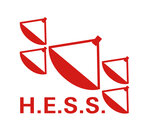
Local contact: Prof. Dr. Stefan Wagner (ZAH/LSW)
The High Energy Stereoscopic System H.E.S.S. (High Energy Stereoscopic System) in Namibia is the most powerful ground based system of Imaging Atmospheric Cherenkov Telescopes for the investigation of cosmic gamma rays in the 100 GeV energy range. The H.E.S.S. project is run by a collaboration of European and African institutions. The Landessternwarte Heidelberg (LSW) is a member of this collaboration.
CUBES (UV Spectrograph for the VLT)

Local contacts: Dr Julian Stürmer (ZAH/LSW)
CUBES (Cassegrain U-Band Efficient Spectrograph), is the forthcoming ESO VLT spectrograph to be installed at one Cassegrain focus of the VLT with the goal of covering with a high efficiency the UV ground-based region (300 - 400 nm) with intermediate resolution (about 20K).
4-metre Multi-Object Spectroscopic Telescope (4MOST)

Local contacts: Prof. Dr Quirrenbach (ZAH/LSW), Prof. Dr Christlieb (ZAH/LSW), Florian Rothmaier (ZAH/LSW)
The 4MOST consortium has been selected by the European Southern Observatory (ESO) to provide the ESO community with a fibre-fed spectroscopic survey facility on the VISTA telescope with a large enough field-of-view to survey a large fraction of the southern sky in a few years. The facility will be able to simultaneously obtain spectra of ~2400 objects distributed over an hexagonal field-of-view of 4 square degrees. This high multiplex of 4MOST, combined with its high spectral resolution, will enable detection of chemical and kinematic substructure in the stellar halo, bulge and thin and thick discs of the Milky Way, thus help unravel the origin of our home galaxy. The consortium consists of 17 members, some contributing to the hardware development, others to the software development, and almost all to the science case development (not detailed here). The 4MOST-team at the Landessternwarte is resposible for the development and assembly of the high resolution spectrograph. Prof. Christlieb is PI of the 4MOST Milky Way Halo High-Resolution survey, which is one of the 4MOST consortium surveys that will be conducted during the 5-year survey program that is scheduled to start in 2025.
2ES (Radialgeschwindigkeitsspektrograph für das 2.2m ESO/MPG)

Local contacts: Dr Julian Stürmer (ZAH/LSW)
2ES is a next-generation extreme-precision radial velocity spectrograph that will be installed at the MPG/ESO 2.2m Telescope on La Silla, Chile. 2ES will be dedicated to a > 5-year observing program with access to the majority (2/3) of the telescope time with the goal of discovering temperate terrestrial Earth-mass planets in the habitable zone around the brightest solar-type stars in the sky.
DFG SPP 1992 "Exploring the Diversity of Extrasolar Planets"

This Priority Programme of the DFG, German Research Foundation (DFG) is going to run for six years. This SPP tries to answer the questions, what the diversity of exoplanets tells us about their formation processes and the evolution of planets and planetary systems, what we can learn about the astrophysical conditions necessary to harbour life and if these conditions are common in our Milky Way.ZAH participates sucessfully with five projects: Pebble accretion and the composition of exoplanets (C. Dullemond, ITA), Composition of planets with an N-body-Monte-Carlo approach (C. Dullemond, ITA), Characterizing and Understanding the Planet Population around Intermediate Mass Stars (S. Reffert, LSW), How planetary systems are shaped by their birthplace (R. Spurzem, ARI), Cool Earths: Discovering Exoplanets beyond the Snow-line with Gravitational Microlensing (J. Wambsganss, ARI), Detection and characterization of exoplanets through gravitational microlensing in the age of the Large Synoptic Survey Telescope (LSST) (Y. Tsapras, ARI) (last update 2023/05/26)
Sloan Digital Sky Survey (SDSS)

Local contact: Prof. Dr. Eva Grebel (ZAH/ARI)
The Sloan Digital Sky Survey (SDSS) operates dedicated telescopes in the Northern and in the Southern hemisphere. Initially, a homogeneous multi-color imaging survey of the northern hemisphere, the SDSS, is now gathering multi-epoch optical & IR spectroscopy across the entire sky. The ZAH has joined the fifth phase of the survey (SDSS-V), which also offers contiguous integral-field spectroscopic coverage of the Milky Way and Local Volume galaxies.
International Research Network for Nuclear Astrophysics (IReNA)
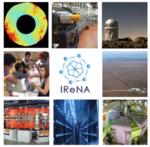
Local contact: Prof. Dr. Norbert Christlieb (ZAH/LSW) (last update 21/07/01)
IReNA is a US National Science Foundation Network of Networks. It connects six interdisciplinary research networks across 17 countries (see below) to foster collaboration on nuclear astrophysics, complement and enhance research capabilities around the world, and thus greatly accelerate progress in science. An important component of IReNA is the training of students and other young researchers in an unique interdisciplinary, collaborative, and international environment that prepares them for a broad range of STEM careers in science, industry, government, and national laboratories.
Bulge DECam Blanco Survey (BDBS)

Local contact: Priv. Doz. Dr. Andreas Koch-Hansen (ZAH/ARI) (last update: 21/07/12)
The Blanco DECam Bulge Survey (BDBS) is an LSST precursor program to image ~200 sq. deg. of the Galactic bulge from -10 < l < +10 to -10 < b <-2. BDBS targets the relatively low extinction regions of the Southern Galactic bulge. The Survey is in the ugrizY bands, obtained with DECam, with the goal of retaining precise photometric calibration even at the bright end.
PHANGS (Physics at High Angular resolution in Nearby GalaxieS)
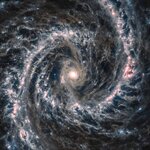
Local contact: Dr Kathryn Kreckel (ZAH/ARI)
The PHANGS (Physics at High Angular resolution in Nearby GalaxieS) survey is making high resolution observations of nearby galaxies with several telescopes, including ALMA, Hubble, JWST and the VLT. We aim to understand the interplay of the small-scale physics of gas and star formation with galactic structure and galaxy evolution. Observations of nearby galaxies will be utilized to understand how physics at or near the “cloud” scale are affected by galaxy-scale conditions, how they affect still smaller scale processes, and how these influence the evolution of whole galaxies. (2023/05/26)
The OMEGA-II Project: Characterizing the Milky Way's Hidden Populations
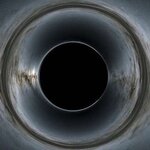
Local contact: Prof. Dr Joachim Wambsganss, Dr Yiannis Tsapras, Dr Markus Hundertmark (ZAH/ARI)
This Key Project uses the Las Cumbres Observatory (LCO) and is focused on the detection of isolated stellar-mass black holes, as well as planetary and stellar binaries using the gravitational microlensing method. Large astronomical surveys detect and alert ongoing microlensing events in the entire sky. This project provides supporting high-cadence follow-up observations in order to characterize the lens systems in great detail. These observations are automatically queued on the LCO global network of telescopes and aim to explore the population of some of the faintest objects in the Galaxy. (2023/05/26)
Plato
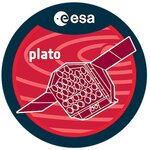
Local contact: Prof. Dr. Saskia Hekker (HITS, ZAH/LSW)
The PLATO satellite will survey the brightest stars in the sky for transiting planets. PLATO's sensitivity and operation mode will allow the detection of earth analogues - for mass and orbit - orbiting solar-like stars, a task that will not be covered by any other project in this decade. PLATO's launch is planned in 2026. (2023/05/26)
Kepler asteroseismic science consortium (KASC)
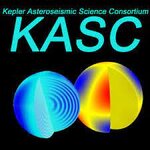
Local contact: Prof. Dr. ir. Saskia Hekker (HITS, ZAH/LSW)
The Kepler Asteroseismic Science Consortium (KASC), a group of collaborating scientists and/or institutions, was established to accomplish the activities of the Kepler Asteroseismic Investigation (KAI) within the Kelper Project. In particular, the groups' asteroseismic analysis of Kepler data will provide accurate determination of the radius of a large fraction of the stars hosting candidate planetary systems, as well as estimates of the ages of the systems. Investigations of a broad range of stars will also substantially improve our understanding of general stellar evolution, and hence strengthen the use of such modelling to further constrain the properties and evolution of the stars and systems investigated in the Kepler extrasolar planet program. (2023/05/26)
TESS asteroseismic science consortium (TASC)
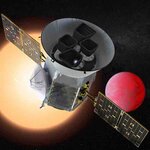
Local contact: Prof. Dr. ir. Saskia Hekker (HITS, ZAH/LSW)
TASC is a scientific collaboration formed around the asteroseismic activities of the TESS mission. The goal of TASC is to gather a large fraction of the relevant research groups around the world. TASC will maintain a database (TASOC) with TESS photometry data in several data forms as well as processed and analysed data. The TASC data centre will also analyse raw TESS data when needed. TASC will contain a working group structure that will be an optimized collaborative structure and is aimed at initiating collaboration between many individual researchers and research groups around the world. Postdocs and PhD-students will via TASC find an easy and direct way to take part in collaborations. TASC will also organize workshops aiming at target selection, science collaboration and data analysis. Those activities will be coordinated with the KASC workshops. (2023/05/26)
XShooting ULLYSES - Massive stars at low metallicity
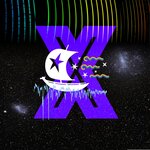
Local contact: Dr. Andreas Sander (ZAH/ARI)
"X-Shooting ULLYSES" (XShootU) is an open collaboration of astrophysicists devoted to the rich scientific dataset resulting from the ULLYSES program and corresponding XSHOOTER data on massive stars at subsolar metallicity. ULLYSES is a large Director's Discretionary program for the Hubble Space Telescope (HST), devoting approximately 1000 HST orbits to establish a spectroscopic ultraviolet (UV) spectral library of young high- and low-mass stars. The UV data is complemented by optical and near-IR ESO XSHOOTER observations brought in by the community (PI: J.S. Vink). The XShootU collaboration was formed to provide an organizational framework for the various science cases, ranging from the analysis of individual stars to stellar feedback, evolutionary constraints and building new spectral libraries for stellar population synthesis.
XShootU Website: https://massivestars.org/xshootu/
ULLYSES Website: http://ullyses.stsci.edu/
BLOeM - Binarity at LOw Metallicity
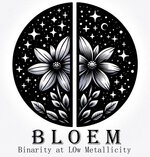
Local contact: Dr. Andreas Sander (ZAH/ARI)
In our Milky Way, most massive stars are living in multiple systems with many of them interacting at least once in their lifetime. These interactions, primarily in the form of mass-transfer, fundamentally alter the evolutionary paths of both stars, and as a consequence, the chemical content and ionising budget of their host galaxies. Yet, little is known about binarity and multiplicity of massive stars at lower metallicity, although their understanding is crucial to decipher observations of gravitational waves, exotic supernovae, and early galaxies in the high-redshift Universe. The binarity at LOw Metallicity (BLOeM) collaboration explores about 900 massive stars in the SMC, the closest low-metallicity environment offering a large population of massive stars. Using new ESO spectra (PIs: T. Shenar, J. Bodensteiner)covering 25 epochs selected in the field of the SMC, the open collaboration provides an unprecedented opportunity to uncover the links between rotation, star formation, and binary interactions in a metallicity environment representative for earlier cosmic times.
BLOeM Website: https://www.tomershenar.com/bloem
Expired Collaborations
DFG SFB 881 "The Milky Way System" (Expired 2022)

Local contact: Prof. Dr. Eva Grebel (ZAH/ARI)
The origin of the Milky Way and fundamental issues connected with galaxy evolution were the focus of the Collaborative Research Center 881 "The Milky Way System" at Heidelberg University. The SFB 881 was supported by the German Research Foundation (first funding period: 2011 - 2014, second funding period: 2015 - 2018, third and final funding period: 2019 - 2022). Its research work revolved around our own galaxy, the Milky Way. Scientists involved in the SFB investigated the origins and evolution of the Milky Way and its surroundings in order to clarify fundamental principles of galaxy formation. Other goals of the research work done by SFB 881 included testing the predictions of cosmological models on galaxy formation, the exploration of the assembly history of our Milky Way, constraining the role of accretion, investigating the small-scale distribution of dark matter, the study of modes of star formation in different Galactic components from molecular clouds to star clusters and field stars, and tracing our Galaxy's star formation history, chemical evolution, and dynamical history across cosmic time. Gaia data played a key role in SFB 881. The SFB's spokesperson was Eva Grebel.
The Gaia-ESO Survey (GES) (Expired)

Local contact: Prof. Dr. Eva Grebel (ZAH/ARI)
ARI and LSW are partners in the Gaia-ESO Survey (GES), a public spectroscopic survey with the Very Large Telescope (VLT) and the European Southern Observatory (ESO) in Chile. The GES targets more than 100,000 stars in the halo, bulge, thin and thick disk, and selected open clusters of the Milky Way and provides individual element abundances and precise radial velocities, complementing the astrometric data from Gaia.
RAVE and Pan-STARRS (Expired)
Local contact: Prof. Dr. Eva Grebel (ZAH/ARI)
The ARI participates in the Radial Velocity Experiment (RAVE), which obtained spectra of more than half a million stars in the Solar neighborhood using the 1.2-m UK Schmidt Telescope of the Australian Astronomical Observatory. RAVE measured radial velocities, stellar parameters, and elemental abundances for these stars, which tell us about the evolutionary history of the Milky Way.
ARI scientists also participate in the Panoramic Survey Telescope & Rapid Response System (Pan-STARRS 1), which carried out a multi-color imaging survey with a 1.8-m telescope in Hawaii. Over a period of four years, three quarters of the entire sky were repeatedly imaged in five filters, providing a valuable data set for Galactic archeology and many other science applications.
RAVE: https://www.rave-survey.org/
PAN-STARSS 1: https://panstarrs.stsci.edu/
European Research Council Advanced Grant Project "STARLIGHT"

Local contact: Prof. Dr. Ralf Klessen (ZAH/ITA)
The appearance of the first stars of the universe marked a primary transition in cosmic history. Their light ended the “dark ages”. They played a key role in the metal enrichment and the reionization of the Universe, thereby shaping the galaxies we see today.
Understanding high-redshift star formation is central to many areas of modern astrophysics. However, still little is known about the origin and observable characteristics of the first stellar populations. The Advanced Grant Research Project "Formation of the First Stars", funded by the European Research Council (ERC), intends to shed light on the physical processes that govern the formation of stars in the early Universe. The projects applies a concerted, multi-facetted approach that combines a range of complementary expertise and innovative techniques.

